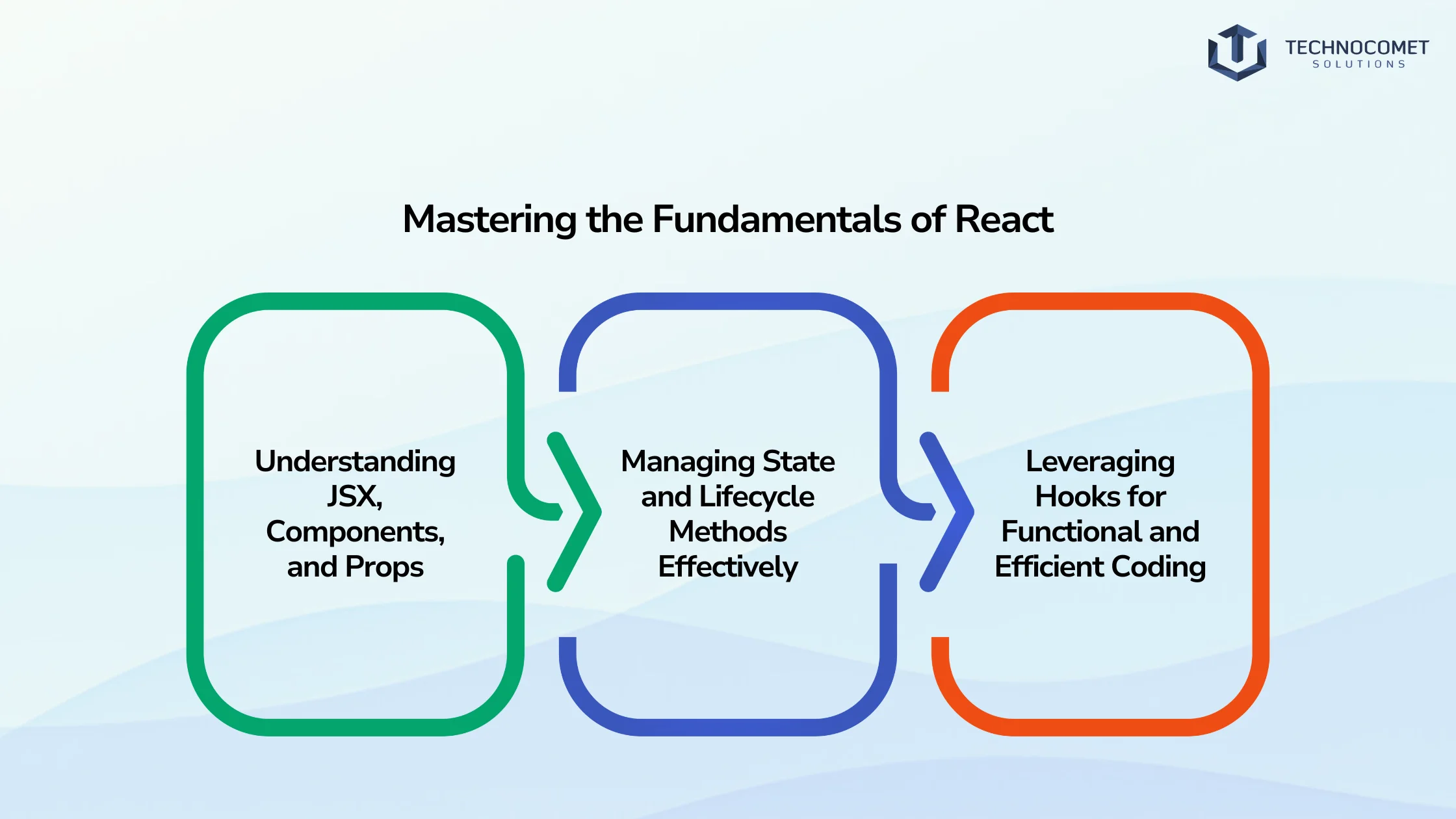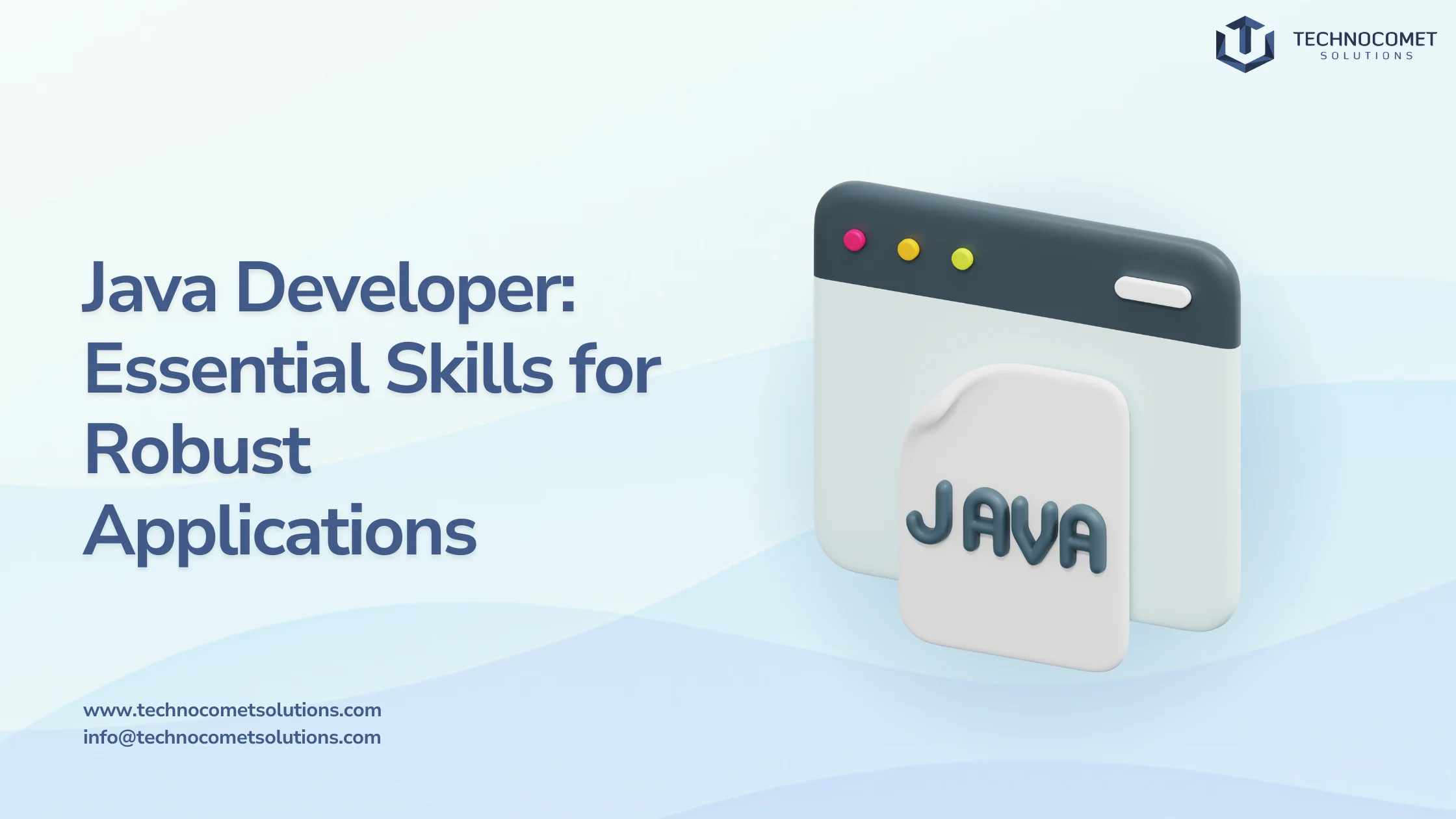Introduction
The demand for React front end developer has surged dramatically in recent years, driven by the increasing need for dynamic and interactive web applications across various industries. As businesses strive to enhance user experiences and engagement, they are turning to React, a powerful JavaScript library, to build responsive interfaces that can adapt to user needs. Companies like TechnoComet Solutions are at the forefront of this trend, actively seeking talented developers who can leverage React’s capabilities to create innovative solutions. The versatility of React allows developers to build everything from simple websites to complex enterprise applications, making it a valuable skill in today’s job market.
As more organizations embrace digital transformation, the role of a React front end developer becomes increasingly critical in delivering high-quality products that meet modern standards. This growing demand is reflected in competitive salaries and ample job opportunities for skilled developers.
The rising demand for React front end developer in modern web development
The demand for React front end developer is soaring in modern web development. As businesses increasingly rely on dynamic, interactive web applications, the need for skilled developers who can effectively use React has become crucial. According to a recent survey, React remains one of the most popular libraries among developers, with a significant percentage of companies prioritizing it for their front-end development needs.
This trend indicates that mastering React can open numerous career opportunities and provide a competitive edge in the job market. With the rise of e-commerce, social media platforms, and real-time applications, the role of a React front end developer is more vital than ever.
Why React is the Go-To Library for Building Dynamic Web Apps
React’s popularity stems from its ability to create fast and responsive user interfaces. It allows developers to build applications that can handle high traffic and user interactions efficiently. The component-based architecture of React promotes reusability and maintainability, enabling developers to create complex UIs by breaking them down into smaller, manageable pieces.
Additionally, React’s virtual DOM optimizes rendering performance by minimizing direct manipulation of the actual DOM, which is often slow and resource-intensive. This efficiency translates into better user experiences, as applications load faster and respond more fluidly to user inputs.
Overview of Key Skills Every React Front End developer Should Master
To thrive as a React front end developer, mastering specific skills is essential. These include understanding the fundamentals of React, such as JSX, components, and props; proficiency in JavaScript and ES6+ features; experience with state management libraries; and a solid grasp of front-end tools and ecosystems. Additionally, knowledge of design principles and collaboration tools is vital for creating effective web applications.
A well-rounded skill set not only enhances a developer’s ability to build robust applications but also fosters collaboration within teams and improves overall project outcomes. As technology evolves, staying updated with the latest trends and best practices becomes increasingly important for long-term success.

Mastering the Fundamentals of React
Understanding JSX, Components, and Props
JSX (JavaScript XML) is a syntax extension that allows developers to write HTML-like code within JavaScript. Understanding JSX is fundamental for any React front end developer as it simplifies the process of creating components. JSX combines the expressive power of JavaScript with the declarative nature of HTML, enabling developers to describe what the UI should look like in a straightforward manner. Components are the building blocks of React applications; they encapsulate logic and presentation, allowing for reusable code. Each component can manage its own state and lifecycle, making it easier to develop complex interfaces.
Props (properties) are used to pass data between components, enabling dynamic rendering of content based on user interactions. This modular approach not only enhances code organization but also promotes collaboration among team members by allowing them to work on different components independently.
Managing State and Lifecycle Methods Effectively
State management is crucial in any React application. A React front end developer must understand how to manage component states effectively to ensure that the UI reflects changes in data. The state can be local to a component or shared across multiple components using various state management solutions like Redux or Context API. Lifecycle methods allow developers to hook into different stages of a component’s life cycle, providing opportunities to execute code at specific times (e.g., when a component mounts or updates). These methods are essential for tasks such as fetching data from APIs or cleaning up resources when a component unmounts.
By mastering state management and lifecycle methods, React front end developer developers can create responsive applications that provide users with real-time updates and seamless interactions. This understanding also helps in debugging issues related to state changes or lifecycle events that may arise during development.
Leveraging Hooks for Functional and Efficient Coding
React Hooks are functions that let developers use state and other React features without writing a class. Hooks like useState and useEffect have transformed how React front end developer approach component logic, promoting cleaner and more functional coding practices. For instance, useState allows developers to add state variables directly within functional components, while useEffect enables side effects like data fetching or subscriptions without needing class-based lifecycle methods. This shift towards functional programming not only reduces boilerplate code but also enhances readability and maintainability.
Additionally, custom hooks can be created to encapsulate reusable logic across components, further streamlining development processes. This flexibility encourages developers to think creatively about how they structure their applications for maximum efficiency.
Proficiency in JavaScript and ES6+ Features
Key ES6+ Syntax and Features React front end developer Rely On
A strong foundation in JavaScript is essential for any React front end developer. ES6 introduced significant features such as arrow functions, destructive assignments, template literals, and modules that enhance code readability and maintainability. Arrow functions provide a concise syntax for writing functions while preserving the context of this, which is particularly useful in event handlers within React components. Destructuring assignments simplify extracting values from arrays or objects, making code cleaner and more intuitive. Template literals allow for easier string interpolation, which can be beneficial when dynamically generating content in JSX.
Familiarity with these features allows developers to write more concise and efficient code while improving collaboration with other team members who may also be using modern JavaScript practices. Moreover, understanding these features helps developers troubleshoot issues more effectively when they arise.
Writing Modular, Maintainable JavaScript Code
Modular programming helps in organizing code into separate files or modules, making it easier to manage and maintain. A React front end developer should focus on writing modular code that promotes reusability across different parts of an application. By breaking down functionality into smaller modules, such as utility functions or custom hooks, developers can enhance code clarity and reduce duplication. This modular approach not only simplifies testing but also facilitates easier updates or refactoring in the future since changes can be made in isolation without affecting other parts of the application.
Additionally, modular code encourages better collaboration among team members by allowing them to work on different modules simultaneously without conflict.
Asynchronous Programming: Mastering Promises and Async/Await
Asynchronous programming is crucial for handling operations like API calls without blocking the main thread. Understanding promises, objects representing eventual completion (or failure) of an asynchronous operation, and using async/await syntax enables React front end developer to write cleaner asynchronous code that is easier to read and debug. For example, using async/await allows developers to write asynchronous code that looks synchronous, improving readability significantly compared to traditional promise chaining.
This mastery over asynchronous programming patterns ensures that applications remain responsive while performing time-consuming tasks like data fetching or processing user inputs. Furthermore, handling errors gracefully in asynchronous operations becomes simpler with try/catch blocks when using async/await.
Experience with State Management Libraries
Choosing Between Redux, Context API, and Other Solutions
State management is vital for complex applications where multiple components need access to shared data. Popular solutions include Redux, a predictable state container, and Context API, a built-in feature in React that provides a way to pass data through the component tree without having to pass props down manually at every level. A proficient React front end developer should be able to evaluate these options based on project requirements such as scalability, complexity, performance needs, and team familiarity with these tools.
Understanding when to use each solution to significantly impact an application’s architecture and maintainability. Additionally, being aware of emerging state management libraries can help React front end developer choose the best fit for their specific project needs.
Structuring State Management for Scalability and Performance
Effective state management involves structuring data in a way that supports scalability as an application grows. This includes organizing state logically into slices or domains based on functionality (e.g., user authentication state vs. product data). Minimizing unnecessary re-renders by leveraging techniques like memoization can enhance performance significantly; this ensures that components only update when their relevant state changes rather than on every render cycle triggered by parent components.
Furthermore, implementing best practices such as normalizing data structures can help streamline access patterns within complex applications while reducing redundancy across various states.
Handling Complex Data Flows with Ease
Managing complex data flows can be challenging but is essential for creating responsive applications. A skilled React front end developer should be adept at using tools like Redux middleware (e.g., Redux Thunk or Redux Saga) or custom hooks to streamline data flow management within their applications. Middleware allows handling side effects like asynchronous actions seamlessly while keeping business logic separate from UI concerns; this separation promotes cleaner codebases where each part has clear responsibilities.
Additionally, understanding how to implement efficient caching strategies can further enhance performance by reducing unnecessary network requests during data-fetching operations.
Strong Understanding of Front End Tools and Ecosystems
Utilizing npm, Yarn, and Webpack for Efficient Project Setup
Package managers like npm (Node Package Manager) or Yarn are essential for managing dependencies in a React front end developer project effectively; these tools allow developers to install libraries quickly while ensuring compatibility across different environments through lock files (e.g., package-lock.json or yarn.lock). Webpack serves as a module bundler that helps optimize assets for production deployment by enabling features such as tree shaking (removing unused code), minification (reducing file size), and hot module replacement (allowing live updates during development).
Familiarity with these tools is critical for any React front end developer aiming to streamline their workflow while ensuring high-quality builds. Moreover, understanding how these tools integrate with CI/CD pipelines can further enhance deployment processes.
Debugging Tools and Techniques for Faster Development
Debugging is an integral part of development, Tools like Chrome DevTools allow React front end developer to inspect elements on the fly while monitoring network requests made by their applications efficiently during runtime execution without altering source code directly or relying solely on console logs anymore! Mastery over these tools can significantly speed up the development process by providing insights into performance bottlenecks or unexpected behaviors early on before they escalate into larger issues later down the line.
Additionally, utilizing error tracking services like Sentry or LogRocket can help capture runtime errors occurring in production environments so they can be addressed promptly.
Testing Frameworks Like Jest and React Testing Library
Testing ensures that applications work as intended before deployment; frameworks like Jest provide comprehensive testing capabilities, including unit tests, while React Testing Library focuses specifically on testing components from a user’s perspective rather than implementation details alone! A competent React front end developer should prioritize testing practices not just because they help catch bugs early but also because they foster confidence among team members regarding changes made throughout development cycles leading up until release time!
Incorporating end-to-end testing frameworks such as Cypress further enhances test coverage by simulating real user interactions within an application environment.

Design and User Experience Fundamentals
Building Responsive Designs with CSS Frameworks and Libraries
Responsive design is crucial for providing optimal user experiences across devices; knowledge of CSS frameworks such as Bootstrap or Tailwind CSS enables React front end developer to create visually appealing layouts that adapt seamlessly across different screen sizes while ensuring consistency across various platforms! By utilizing grid systems offered by these frameworks alongside media queries tailored specifically towards device breakpoints, we ensure layouts remain intact regardless of whether viewed via mobile phones, tablets, desktops, etc., thereby enhancing overall usability!
Understanding CSS Flexbox/Grid properties also empowers developers to create sophisticated layouts without relying solely on external libraries.
Collaborating with UI/UX Designers for Seamless Interfaces
Collaboration between developers & designers plays an integral role when delivering cohesive user experiences; understanding design principles allows React front end developer to implement designs accurately while maintaining functionality! Regular communication between teams helps bridge gaps between technical constraints & creative visions, leading towards better outcomes overall since both sides contribute unique perspectives towards achieving common goals!
Participating in design reviews not only fosters mutual respect but also encourages constructive feedback loops that elevate final product quality significantly.
Incorporating Accessibility Best Practices into Web Apps
Accessibility ensures that applications are usable by everyone, including those with disabilities! A commitment towards incorporating accessibility best practices into web apps ensures compliance with standards like WCAG (Web Content Accessibility Guidelines); this not only broadens audience reach but also demonstrates social responsibility within tech communities! Simple measures, such as providing alternative text descriptions, using semantic HTML elements, properly labeling form fields, etc., go a long way towards creating inclusive environments where all users feel welcome regardless of their abilities!
Additionally, conducting accessibility audits during development phases helps identify potential barriers early on before launch.
Collaboration and Version Control Skills
Using Git and GitHub for Effective Team Collaboration
Version control systems like Git are indispensable within modern development proficiency over Git allows React front end developers to track changes efficiently, collaborate seamlessly, and manage project versions effectively! Branching strategies enable teams work simultaneously without interfering each other’s progress Merging changes back to the main branch once completed ensures smooth transitions while maintaining clean history logs documenting every significant alteration made throughout the project’s lifecycle!
Utilizing pull requests facilitates thorough reviews before merging changes into production branches, promoting higher quality contributions overall.
Writing Clear Documentation for Seamless Project Handoffs
Documentation plays a vital role during project handoffs between team members departments; clear documentation helps ensure continuity within React front end developer development efforts when transitioning responsibilities among individuals! Well-structured README files outlining setup instructions usage guidelines API references, etc., make onboarding newcomers much smoother, thereby reducing ramp-up times significantly allowing teams to focus more energy on actual coding rather than figuring out how things work!
Additionally, maintaining internal wikis or knowledge bases fosters collective learning, sharing valuable insights gained throughout various projects, and enhancing overall team productivity.
Embracing Agile Practices & Working with Cross-Functional Teams
Agile methodologies promote iterative development processes, enhancing flexibility in project management. Successful React front end developer should feel comfortable working within Agile frameworks while collaborating alongside cross-functional teams consisting of designers, QA analysts, product managers, etc.! Regular stand-ups, sprint reviews, and retrospectives foster open communication and encourage feedback loops, ultimately leading towards higher-quality deliverables produced faster than traditional waterfall approaches ever could achieve alone!
Embracing continuous improvement principles drives innovation and keeps teams motivated and engaged throughout entire project lifecycles, ensuring adaptability amidst changing requirements!
Optimizing Performance for Modern Web Applications
Implementing Code-Splitting & Lazy Loading Techniques
Performance optimization techniques such as code splitting allow a React front end developer to load only the necessary parts of an application on demand, significantly improving load times. Lazy loading image components further enhances performance by deferring loading until needed, thereby reducing the initial payload size and speeding up perceived responsiveness. End-users experience a rise in satisfaction levels as waiting times decrease substantially.
Leveraging dynamic imports coupled with routing libraries enables seamless transitions between pages without compromising load efficiency, leading to enhanced user engagement metrics across platforms.
Reducing Re-renders with Memoization & Pure Components
Memoization techniques help a React front end developer prevent unnecessary re-renders by caching results based on input parameters. This ensures components update only relevant states that change, rather than every render cycle triggered by parent components. Utilizing pure components guarantees that components re-render solely when props change, optimizing performance across the entire application. This approach improves efficiency and resource utilization and reduces latency experienced by end users during interactions.
By employing techniques such as React.memo() alongside functional updates, optimal rendering behavior is ensured and maintained consistently throughout the application lifecycle, fostering positive user experiences.
Monitoring & Optimizing App Performance
Regular monitoring using tools like Lighthouse and performance profiling helps a React front end developer identify bottlenecks within applications, proactively addressing issues before they escalate and negatively impact user experiences. A proactive approach to optimization ensures applications remain responsive even under heavy usage conditions, maintaining high standards of quality assurance.
Continuous monitoring post-launch allows teams to iterate improvements based on real-world usage patterns. By adapting strategies based on feedback from actual users, React front end developers enhance the effectiveness and long-term viability of the solutions provided.
Conclusion
In conclusion, becoming a proficient React front end developer requires mastering various skills, ranging from fundamental knowledge of React itself to advanced JavaScript features, state management solutions, design principles, collaboration techniques, performance optimization strategies, and more. As demand continues to rise in the tech industry, honing these skills will not only enhance individual career prospects but also contribute significantly to building high-quality web applications that meet modern user expectations, delivering exceptional experiences to diverse audiences worldwide. With dedication and a commitment to excellence, an aspiring React front end developer will undoubtedly shape the future of digital landscapes through innovative solutions crafted to meet the needs of users everywhere.
If you’re looking to enhance your IT services or need expert assistance in web development, TechnoComet Solutions is here to help! Our team of skilled React front end developer is ready to bring your vision to life with cutting-edge solutions tailored to your needs. Contact us today!
FAQs
A React front end developer should have a strong understanding of HTML, CSS, and JavaScript fundamentals, including ES6 features. Proficiency in JSX, state management libraries like Redux or Context API, and experience with React Hooks are also crucial.
React is preferred for modern web applications due to its component-based architecture, which promotes reusability and maintainability. Its virtualDOM improves performance by minimizing direct manipulation of the actualDOM, leading to faster rendering times.
To improve your skills as a React front end developer, consider building personal projects that utilize React and its ecosystem. Engage in online courses, participate in coding challenges, and contribute to open-source projects.
Career opportunities for React front end developer are abundant, ranging from roles in startups to established tech companies. Positions include front-end developer, UI/UX designer, software engineer, and full-stack developer.







